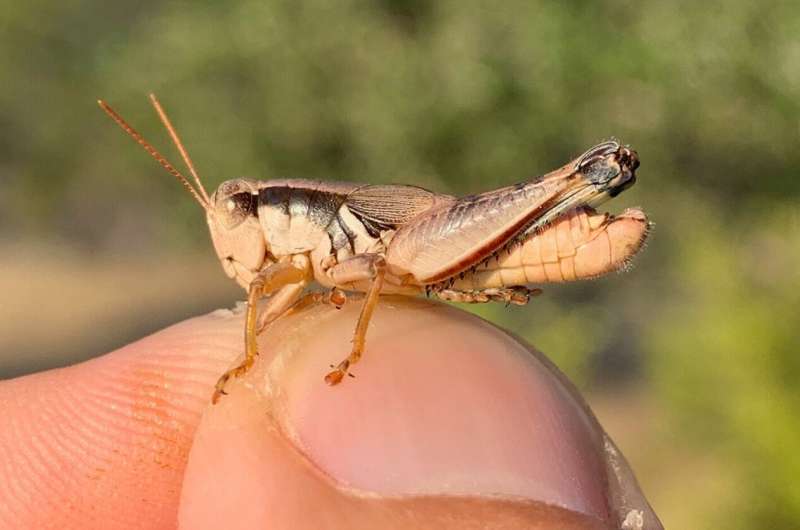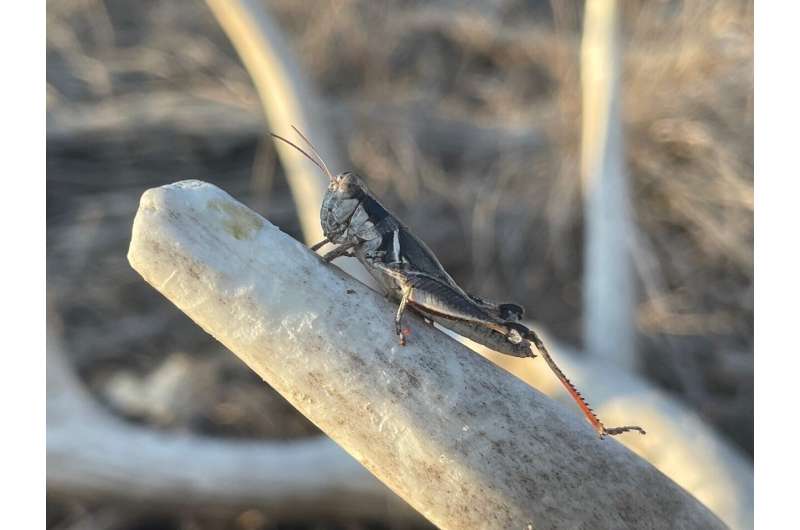This article has been reviewed according to Science X's editorial process and policies. Editors have highlighted the following attributes while ensuring the content's credibility:
fact-checked
peer-reviewed publication
trusted source
proofread
New grasshopper species from central Texas named in honor of two iconic musicians

The central region of Texas is a known hotspot of biological wonders. For the last five years, Dr. JoVonn Hill, an Assistant Professor and Director of the Mississippi Entomological Museum (MEM) at Mississippi State University, and his colleagues have made scientific expeditions to the area that have now revealed an extraordinary find.
The team uncovered seven previously unknown flightless grasshopper species, six of them endemic to the Edwards Plateau, which underscores the region's extraordinary biodiversity.
With this discovery, Dr. Hill is paying tribute to two iconic musicians. In recognition of the "immense contributions" of Texas legends Willie Nelson and Jerry Jeff Walker, he has named two of these flightless grasshopper species after them.
"Melanoplus nelsoni and Melanoplus walkeri immortalize the enduring contributions of these legendary musicians and their connection to Texas," he says.
"After these last few summers [of field studies], just like Mr. Nelson, we too have a little Texas in our souls," he writes in his study, which was just published in the journal ZooKeys.
On Melanoplus walkeri, he writes, "Walker's songs such as Hill Country Rain, Leavin' Texas, and Sangria Wine brought me and my field team joy while traveling between field sites and added to the amazing ambiance of the Edwards Plateau." In fact, the artist recorded his most influential album not far away from the spot where the new species was discovered.

Additionally, the team acknowledges the cultural heritage and deep connection to the region of the Comanche and Tonkawa tribes, naming two species after them, Melanoplus commanche and Melanoplus tonkawa respectively.
"These designations recognize the profound historical and cultural significance of the tribes in the region," Dr. Hill explains.
"These seven newly described species, alongside two preexisting ones, form a cohesive species group, highlighting their shared characteristics and evolutionary relationships," Dr. Hill says in conclusion. "The formation of this new species group presents a significant contribution to our understanding of the diverse ecosystems present in central Texas," he adds.
The discovery of these seven flightless grasshopper species and the formation of a new species group underscore the ecological uniqueness of central Texas, Dr. Hill says. He and the staff of the Mississippi Entomological Museum remain committed to scientific exploration and understanding, promoting the conservation of biodiversity, and inspiring a sense of wonder and appreciation for the natural world.
More information: JoVonn G. Hill, Diversification deep in the heart of Texas: seven new grasshopper species and establishment of the Melanoplus discolor species group (Orthoptera, Acrididae, Melanoplinae), ZooKeys (2023). DOI: 10.3897/zookeys.1165.104047
Journal information: ZooKeys
Provided by Pensoft Publishers





















